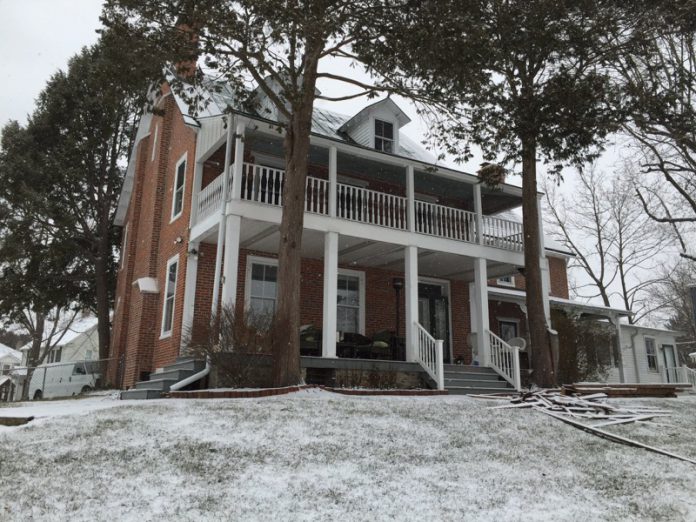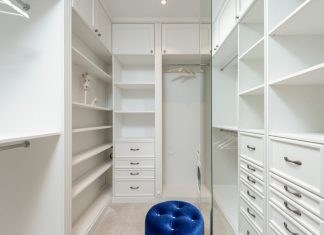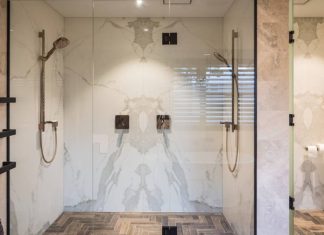Do you love the look of your older home but not the feel? Houses built a century or more ago weren’t built with ductwork in mind. As a result, they’re often hot in the summer and cold in the winter.
But, retrofitting ductwork is expensive and damaging to a classic house. If you’re on a historic registry, you probably can’t make changes like that anyway.
Today, there’s a better solution. A ductless mini split installation makes every room in your home exactly as warm or cool as you want it. It provides better heating and cooling than conventional forced-air. Plus, it costs a fraction of what electric heaters, gas furnaces, and central cost to run.
And, with no ductwork involved, there’s no major construction (or destruction) needed! That means no tearing out walls, carving out classic wood floors to install vents, or building ugly soffits, or ductwork enclosures, in any rooms.
Sounds too good to be true? Well, it may even work better than you’d imagine!
In this article, we’ll walk you through everything you need to know about ductless heating and cooling in older homes: How they work, why they’re worth it, what they’ll look like, and how much a mini split installation might cost you.
How Ductless Mini Splits Work
The “secret” to mini splits is that they don’t move warm or cooled air through your home. Instead, they only move heat around. That’s how one system can control the temperature in your entire home without ductwork to force air from the furnace to every room in the house.
You start with a heat pump, which sits outside your house and looks a little like an AC condenser. In the winter, it draws heat from the air (there’s always heat, even when it’s freezing cold).
That heat warms up a refrigerant liquid, or coolant, which runs in a closed-loop to your indoor units, called air handlers. When the coolant travels inside, it brings the heat with it.
Meanwhile, the air handlers draw in the air in your home. These are usually wall-mounted units that sit up near the ceiling. You’ll get one for every room you’re treating.
The coolant releases the heat inside the air handler, which warms up the air. Then, the indoor unit recirculates the now-warm air back into your home.
In the summer, it works in the opposite direction. The system takes the heat in your home and releases it outside.
Since you’re only moving heat, all you need is a small, flexible line that looks like a hose. It carries the refrigerant from one place to another. Instead of big, bulky ductwork, you can run that line behind your walls where you can’t see them — just like your electrical wiring.
Benefits Of Mini Splits For Older Homes
Besides looking better in an old home, mini splits offer many more benefits!
First is cost-savings! The heat transfer process we explained in the last section doesn’t burn expensive gas or oil to create heat. Nor will it require a lot of electricity to heat coils. Instead, the transfer process uses a tiny amount of power.
Next is comfort! Mini split heat pumps almost all the time in a low-power mode instead of cycling on and off a few times every hour. The result? The temperature is always within a degree or two of your thermostat setting.
Then there’s customization! You can treat a single room or area with one air handler. Or, put them all through the house. Or any combination in between!
Since each air handler has a built-in thermostat, they all work independently. You can set the temperature in each room just the way you want it without affecting other parts of the house.
What A Ductless System Looks Like In Your Home
The air handlers are the only part of a ductless system you’ll see in your home. The heat pump is outside, and the lines run behind the walls.
As we mentioned, the most popular indoor unit style is the wall-mounted air handler. These are usually white boxes around three feet across, one foot high, and a foot deep. They mount high on the wall, close to the ceiling.
Other models are low-wall units, which look like the skinny heaters you see in hotels. They’re a few feet tall and a few feet wide, and they sit on the floor attached to the wall.
Finally, recessed ceiling cassettes mount up in your wall. All you see is a vent on the ceiling.
In some cases, you’ll see the lineset running along the wall. That’s if there’s no way to run it behind the drywall. The lines are in a neat casing that you can paint to match the room.
Basic Pricing Estimates For A Mini Split Installation
The average cost of a mini split installation ranges from around $3,000 for one air handler that treats a single room, or zone, in your home. Then, the cost goes up with each additional air handler. The cost to completely heat or cool most homes is around $17,000, and there are ways to bring that number down.
First, you can get tax credits from the IRS for installing energy-efficient heating and cooling. And most local utility providers offer similar incentives. That can knock hundreds or even thousands off the price.
And, most manufacturers offer promotional discounts at different times of the year. Coordinate your installation around those offers, and you’ll save even more.
Finally, remember that these use a fraction of the energy of your old system! That means you’ll save money every month on your bills. Those savings make up for the extra upfront cost after a few years.
Going ductless is a big decision, but it’s becoming more popular than ever in the United States! Homeowners love the extra comfort and lower bills. And, people with classic houses get all that without ruining their home’s beautiful look and feel.














